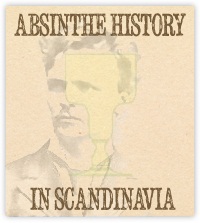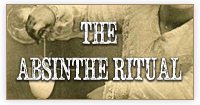Absinthe.se
The premier independent absinthe resource since 2003
I sit at my door, smoking a cigarette and sipping my absinthe, and I enjoy every day without a care in the world.
- Paul Gaugin, 1897
Absinthe drinkers
Many of the famous writers and painters during the "Belle Epoque" were constant and heavy absinthe drinkers. If absinthe helped some in their creativity remains unknown but for many it did just the opposite. However, many were heavy drinkers of anything alcohol, that we know. Either way, many great books, poems and plays have been written by these authors, and many beautiful paintings and sculptures have been created by the people imbibing many absinthes. So maybe it did count for something.
Each entry in the list below links to a full page of more information on each person. Pages that are constantly under work and will grow with more information as my research uncovers it.
Edouard Manet, 1832-1883
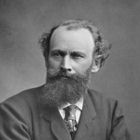
In 1859 Manet produced the first great absinthe painting. Entitled The Absinthe Drinker it caused a scandal at the 1859 Salon, where the selection committee refused to hang it. With cafe society being hijacked by absinthe, this portrait of a swaggering, dandy drunkard (an actual friend of Manet) offended the establishment. They were used to seeing drunks depicted as pitiful, downtrodden wretches, and this man's pride and vitality scared them. The committee attacked the painting for its 'vulgar realism'. And it was not isolated criticism. As Manet wrote in a letter to the poet Baudelaire; "Insults are pouring down on me as thick as hail".
Edgar Degas, 1834-1917
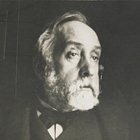
Degas' famous "L'Absinthe" (1876) is the definitive depiction of the drink. It shows a man and woman sitting in a café - faces vacant, eyes glazed over. Under its original title, A Sketch Of A French Café, the painting was not well received. But when it was exhibited in the Grafton Gallery under its new title - L'Absinthe - the painting enjoyed huge controversy, igniting a diplomatic incident that soured Anglo-French relations.
Charles Cros, 1842-1888
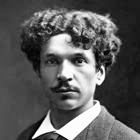
Cros is generally recognised as the inventor of the phonograph, a device he called a Paréophone. But lacking financial resources, he was unable to patent his device before Thomas Edison and others developed the idea and started production.
Cros was also acknowledged for developing certain colour photography processes and an automatic telegraph. How he managed to come up with those, and how he managed to find the time and mind to actually do anything is a mystery, since rumours said he was known to frequent some of the most known cafés in Paris and drink up to twenty absinthes a day. True or not, he did write some wonderful poems and was obviously a great inventor.
Paul-Marie Verlaine, 1844-1902
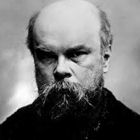
Verlaine sung the praises of absinthe in his youth, and damned absinthe on his deathbed. He consorted with prostitutes and men while drinking, to the dismay of his young wife, and for a time the younger poet Rimbaud was his constant companion, both platonically and sexually.
The stormy relationship with Rimbaud eventually led to the imprisonment of Verlaine after he had shot Rimbaud twice, once in the wrist. His last years his spent living in slums degrading in poverty, drug addicition and heavy alcoholism.
August Strindberg, 1849-1912
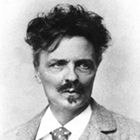
Swedish playwright, novelist, and short-story writer, who combined psychology and Naturalism in a new kind of European drama that evolved into Expressionist drama. His play Miss Julie (1888) remains today the most concentrated example of the first step in the development of Modern drama because it shattered old illusions about the meaning and worth of human existence and 19th century assumptions about the way existence could be presented in theater.
During his years in Paris in the 1880's he came across absinthe, just as every other person in France around that time. A drink he came to both love and hate and mention in several of his works.
During his years in Berlin he was part of a group of artists and writers often seen at the Zum Schwarzen Ferkel, a local tavern. The group was mainly nordic artists such as himself and Edvard Munch but also included Polish writer and journalist Stanislaw Przybyszewski and not to forget - the woman they all wanted, Dagny Juel.
Vincent Van Gogh, 1853 - 1890
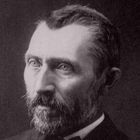
He suffered from hereditary mental illness for most of his life, but such is the drink's reputation that it always seems to be blamed for his self-abusive behaviour. But the extent of his absinthe intake, and its influence on his work and behaviour is unknown. Most scholars agree that he was an avid drinker, addicted to a number of substances, even paint thinner. He may also have been a victim of poisoning from digitalis, which at the time was a common treatment for epilepsy. This might account for the trademark halo effect in his depiction of light sources (digitalis can cause some users to become ultra-sensitive to light). The psychosis he is known to have experienced is more consistent with acute alcoholism than "absinthism".
Oscar Wilde, 1854-1900
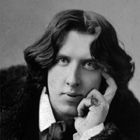
Known for his amazing wit and scandalous lifestyle, Wilde was the great aesthete, glorifying beauty for beauty's sake in a series of sparkling plays, poems, fairy tales and essays. In his only novel, The Picture of Dorian Gray, a young man is corrupted by sensual indulgence and moral indifference. Wilde's lifestyle became too much for Victorian sensibilities, and he was imprisoned in 1895 for conducting a homosexual affair with Lord Alfred Douglas. Two great poems, The Ballad of Reading Gaol and De Profundis were inspired by his experiences in prison.
Wilde is often mentioned as one of the great absinthe drinkers. It is however far from certain that he drank that much absinthe at all. No references to absinthe can be found in any of his own works or letters. The famous quotes about absinthe often attributed to Wilde have instead been written by other authors supposedly "quoting" Wilde.
Arthur Rimbaud, 1854-1891
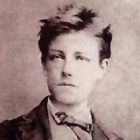
French poet and adventurer who won renown among the Symbolist movement and markedly influenced modern poetry. He is considered the best illustration of symbolist aesthetics.
He was also the lover of Verlaine and the two were in constant fights and arguments which at one time led to Verlaine shooting Rimbaud in the wrist. The shooting eventually resulted in Rimbaud getting Verlaine arrested and subject to a humiliating trial where both his health and relationship to Rimbaud was scrutinized. Rimbaud did withdraw his accusations but the judge sentenced Verlaine to two years in prison.
Edvard Munch, 1863-1944
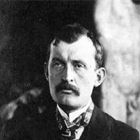
Norwegian symbolist painter and a forerunner of expressionist art. Munch's most famous painting is without a doubt "The Scream".
Munch studied art under, among others, Norwegian Christian Krohg. Living in Oslo, or Christiania as it was named at that time, Munch was a close friend of bohemian Hans Jaeger who influenced his thinking and art to great extent and they spent most nights in cafés drinking - often absinthe. After studying in Paris he moved to Berlin where he became one of "the Scandinavians" and was constantly seen with Strindberg and other writers and artists. Their favourite place, Zum Schwarzen Ferkel was the scene for many ideas but also intrigues among the group.
Henri de Toulouse-Lautrec, 1864-1901
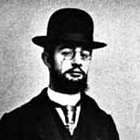
In his late teens, Lautrec was honored to become a student of the artist Fernand Cormon, Paris, whose studio was located on that hill above the city, Montmartre. When he graduated from Cormon's studio, Lautrec gave himself up fully to the bohemian life, spending much of his time drinking and carousing - and constantly sketching - in cabarets, racetracks, and brothels.
His stunted physique earned him laughs and scorn, and kept him from experiencing many of the physical pleasures offered in Montmartre, a sorrow that he drowned in alcohol. At first it was beer and wine. Then brandy, whiskey, and the infamous absinthe found their ways into his life. Art and alcohol were his only mistresses, and they were mistresses to which he devoted all of his time and energy. He was doing one or both almost every day of his life until he died.
Those of you who have seen the 2001 movie Moulin Rouge!, might have noticed that Toulouse-Lautrec actually is one of the characters in it - the artist portrayed by John Leguizamo. In the 1952 movie by the same name, Moulin Rouge (a movie about the life of Toulouse-Lautrec) the character was portrayed by José Ferrer.
Ernest Dowson, 1867-1900
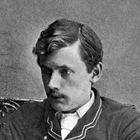
Dowson was a novelist and short story writer. He was one of the best known of "the Decadents", definitely and absintheur and - unusually for the time - an Englishman.
Oscar Wilde is known to have commented on Dowson's heavy absinthe drinking, pointing out that if Dowson didn't drink absinthe, he just wouldn't be Dowson... Ernest Downson died at the very young age of only 32 years much due to his alcoholism. Both his father and mother died only a few years before and the sorrow of losing them both was very hard on him and was in large part cause of his rapid degeneration.
Alfred Jarry, 1873-1907
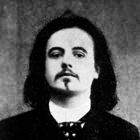
French dramatist and satirist who is mainly known as the creator of the grotesque and wild satirical farce "Ubu Roi" written in 1896 (also "King Ubu") which was a forerunner of Theatre of the Absurd.
He wrote in many different styles and his work include both plays, novels and poetry as well as journalism.
He was known at the Parisian cafés for drinking a lot, and it is rumoured that a couple of bottles of wine and 5-10 absinthes - which he referred to as "the Green Goddess" - a day, was nothing unusual. Alledgedly he once painted his face green and rode through town on his bicycle in the honour of absinthe.
Ernest Hemingway, 1899-1961
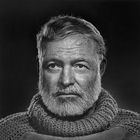
References to absinthe appear in several of Hemingway's famous writings, including Death In The Afternoon and For Whom The Bell Tolls. He was a great "fan" of absinthe and a bad drunk, especially with his love of guns and knives. Hemingway drank absinthe long after it was made illegal in most parts of the world, much thanks to his many visits to Spain where absinthe was readily available and produced long into the 1960's.
In Spain, he would have a few before running with the bulls in Pamplona, while it is also rumoured that he managed to have a few bottles around him while living in the United States. Hemingway also visited Cuba on several occassions where absinthe was also produced and it is more than likely that he brought bottles with him back to Florida. Hemingway committed suicide in 1961.
- absinthe books and poetry -
Many writers "of old" wrote poems or passages about absinthe. Some drank it, some didn't. Find some of them here as well as reviews and notes on modern books about absinthe.
- latest news and additions -
The Absinthe Poetry section has seen several updates the past days. Poems and information about more authors; Antonin Artaud, Arthur Symons, Francis Saltus Saltus, Florence Folsom and Robert Loveman. Open your mind and have a drink while you enjoy their lyrics.
Read more...
- absinthe.se on facebook -
It's the new bistro, the new bar in town. A good place to meet when meeting in real life isn't always an option. Meet me on facebook for more updates from the absinthe world.
